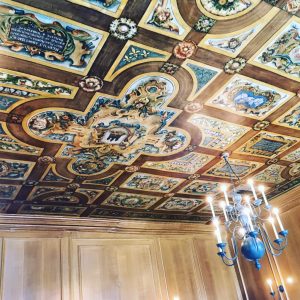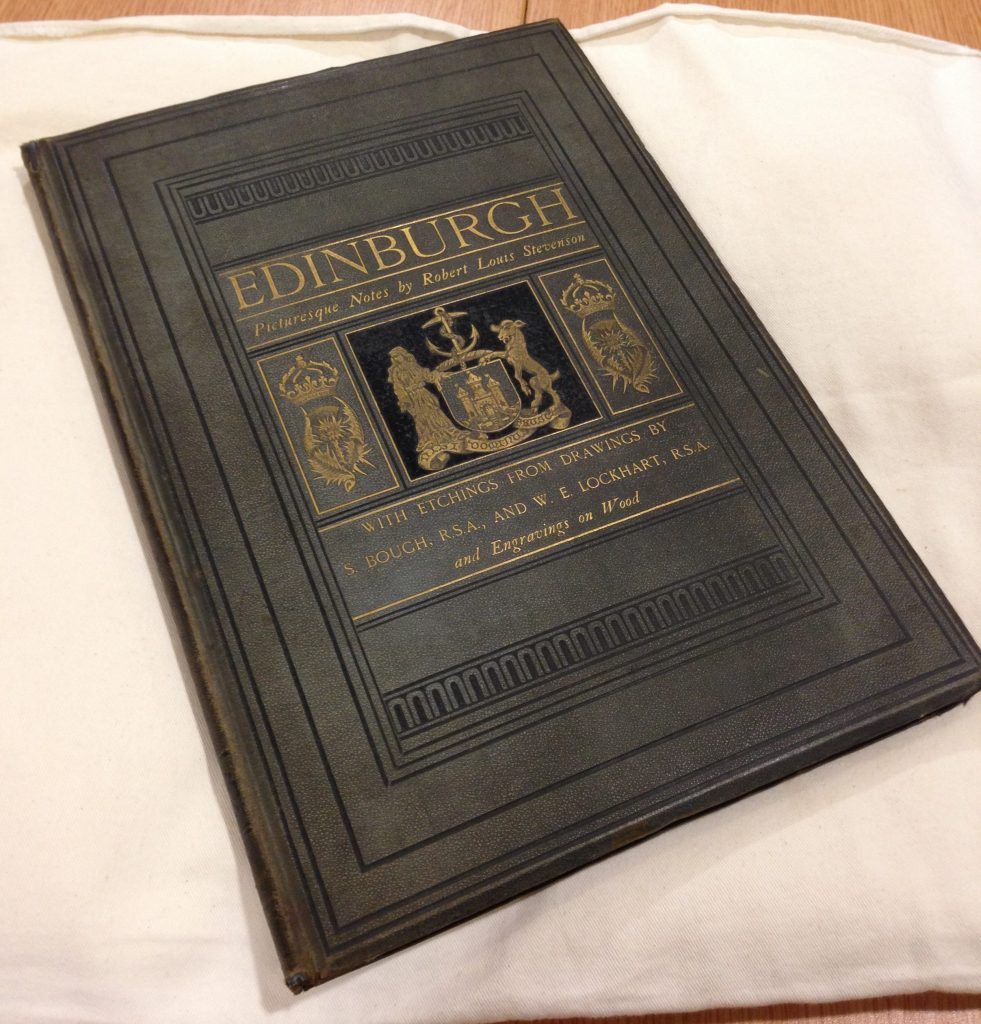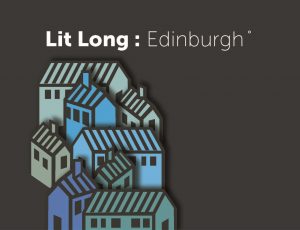Last month, I had the great pleasure of participating in the Scottish Storytelling Festival, speaking at an event called ‘City of Stories; City of Dreams‘ alongside storyteller James Spence and Sian Bevan, the Programme Manager for the Edinburgh UNESCO City of Literature Trust. The storyelling and discussion were followed by a walking tour down the Royal Mile and Canongate, led by poet Ken Cockburn.
As the title suggests, Edinburgh is a city with a rich literary history. It’s difficult to walk through Edinburgh’s centre without passing by the home of a great author or philosopher, or stumbling on a place that has been imagined and re-imagined across countless books, across many centuries. One of my favourite aspects of this event was its location – it was held in the recently refurbished Riddle’s Court, a 16th century building once home to enlightenment thinker David Hume and later the site of Patrick Geddes’s university summer schools.

Ceiling in the Geddes Room at Riddle’s Court, Edinburgh
Many of Edinburgh’s stories are so familiar and iconic that, no matter how old or new, they shape our experience of the city, both as residents and visitors. Stories like Walter Scott’s Waverley, Robert Louis Stevenson’s ‘The Body Snatchers’, Ian Rankin’s Rebus novels, Muriel Spark’s The Prime of Miss Jean Brodie, and Alexander McCall Smith’s New Town novels, beginning with 44 Scotland Street, come together in our imaginations to build an Edinburgh full of contradictions, intrigue, adventure, and beautiful majesty alongside social and architectural decay. But these are complemented by many less well-known stories, like Margaret Oliphant’s The Laird of Norlaw, and many that seem to be entirely forgotten by the contemporary imagination, like Sarah Tytler’s Lady Jean’s Son, from which I read during the Storytelling Festival event. This novel has been long out of print, and is one of many Edinburgh works my colleagues and I on LitLong: Edinburgh found through the computerised text-mining of several large databases of digitised literature in English.
The opening chapter of Lady Jean’s Son, published in 1897 but set during the Douglas Cause trial of the 1760s, describes Edinburgh’s Old Town in ways that evoke the bustle and class diversity of the 18th century city, while still carrying a kernel of the Edinburgh we now know. As the novel begins,
The Canongate of Edinburgh was lying in the full sunshine of a summer morning, which brought out in bold relief its high lights and deep shadows, its stateliness and its squalor. In its promiscuous and often incongrous life and movement, there figured freely lords and ladies; douce burghers and their thrifty spouses; learned lawyers and divines; caddies and fishwives; members of the City Guard, in their cocked hats – coats, waistcoats, and breeches of a “muddy-coloured red,” with their gruesome Lochaber axes; incorrigible vagrants and still more incorrigible randies – now a stray Englishman bewildered and scandalized, now a wild Highlander equally amazed and disgusted, but from an entirely different point of view. [1]
Tytler’s city is ‘not a dainty or fastidious Edinburgh, according to nineteenth-century notions; but it was a marvellously picturesque Edinburgh, full of strong characters, strange stories, wit, wisdom, prejudice, and passion.’ [2] This description momentarily evokes Robert Louis Stevenson’s Edinburgh: Picturesque Notes, published the decade before Tytler’s novel.

1897 edition of Edinburgh: Picturesque Notes, in the University of Edinburgh’s special collections
While both books create a similar vision of the city, each author comes at the sites of the Canongate from a different point of a view, and the more of these descriptions we take together, the more layered our imagined city becomes, like a Palimpsest, inscribed and re-inscribed across the centuries.
–Tara Thomson
1. Sarah Tytler, Lady Jean’s Son: A Novel (London: Jarrold & Sons, 1897), p. 7
2. Ibid., p. 10
 LitLong: Edinburgh
LitLong: Edinburgh